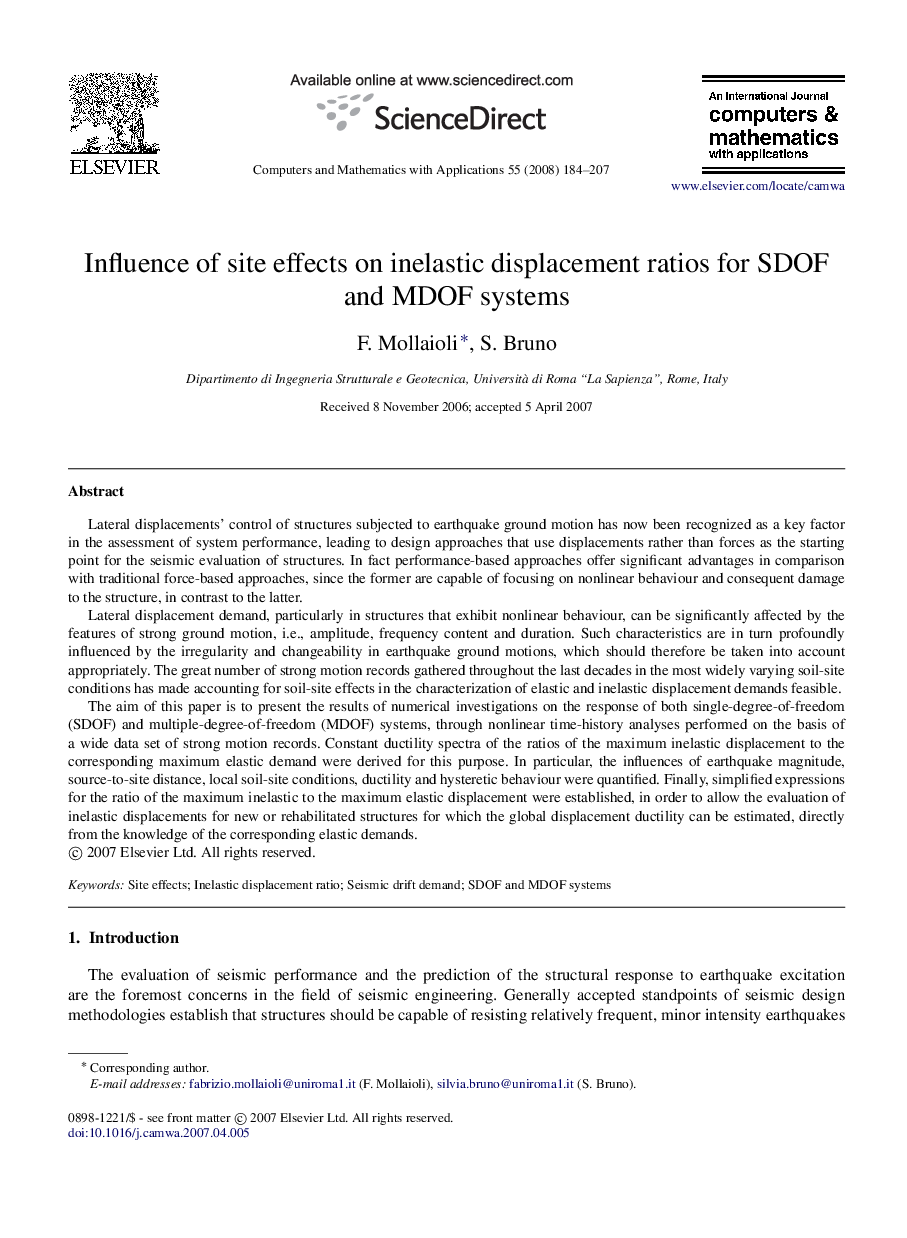| Article ID | Journal | Published Year | Pages | File Type |
|---|---|---|---|---|
| 472453 | Computers & Mathematics with Applications | 2008 | 24 Pages |
Lateral displacements’ control of structures subjected to earthquake ground motion has now been recognized as a key factor in the assessment of system performance, leading to design approaches that use displacements rather than forces as the starting point for the seismic evaluation of structures. In fact performance-based approaches offer significant advantages in comparison with traditional force-based approaches, since the former are capable of focusing on nonlinear behaviour and consequent damage to the structure, in contrast to the latter.Lateral displacement demand, particularly in structures that exhibit nonlinear behaviour, can be significantly affected by the features of strong ground motion, i.e., amplitude, frequency content and duration. Such characteristics are in turn profoundly influenced by the irregularity and changeability in earthquake ground motions, which should therefore be taken into account appropriately. The great number of strong motion records gathered throughout the last decades in the most widely varying soil-site conditions has made accounting for soil-site effects in the characterization of elastic and inelastic displacement demands feasible.The aim of this paper is to present the results of numerical investigations on the response of both single-degree-of-freedom (SDOF) and multiple-degree-of-freedom (MDOF) systems, through nonlinear time-history analyses performed on the basis of a wide data set of strong motion records. Constant ductility spectra of the ratios of the maximum inelastic displacement to the corresponding maximum elastic demand were derived for this purpose. In particular, the influences of earthquake magnitude, source-to-site distance, local soil-site conditions, ductility and hysteretic behaviour were quantified. Finally, simplified expressions for the ratio of the maximum inelastic to the maximum elastic displacement were established, in order to allow the evaluation of inelastic displacements for new or rehabilitated structures for which the global displacement ductility can be estimated, directly from the knowledge of the corresponding elastic demands.
